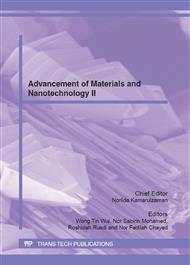p.185
p.190
p.195
p.199
p.204
p.209
p.214
p.223
p.229
Mn as a Substituted Cation in LiCoO2 Cathode Materials
Abstract:
LiCoO2 is the commercial cathode material for Li-ion battery application with many advantages such as ease of preparation and good electrochemical properties. However, it has some limitations especially Co being expensive and toxic. Therefore, the substitution of Co in the LiCoO2 by non-toxic and inexpensive transition metal elements will be an improvement. Partial substitution of Co by Mn has been done in this work via the self-propagating combustion (SPC) method. The materials are then characterized. The materials obtained were phase pure but the electrochemical discharge capacity is about 24 – 27 % less than that of LiCoO2. However, the cycling behaviour of LiCo0.9Mn0.1O2 and LiCo0.8Mn0.2O2 over 15 cycles improved over that of LiCoO2.
Info:
Periodical:
Pages:
204-208
Citation:
Online since:
July 2012
Keywords:
Price:
Сopyright:
© 2012 Trans Tech Publications Ltd. All Rights Reserved
Share:
Citation:


